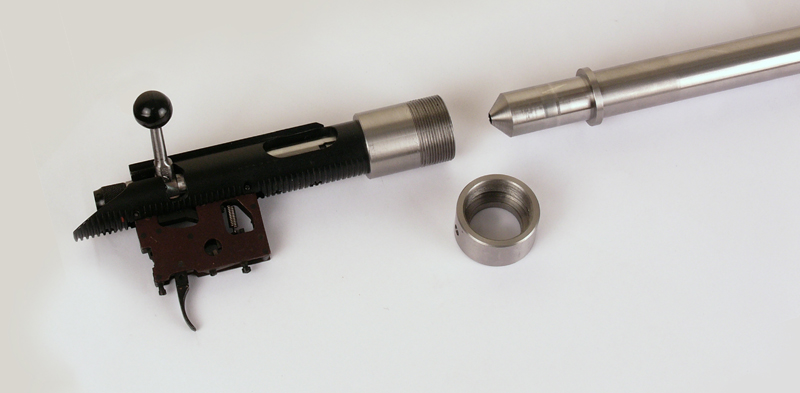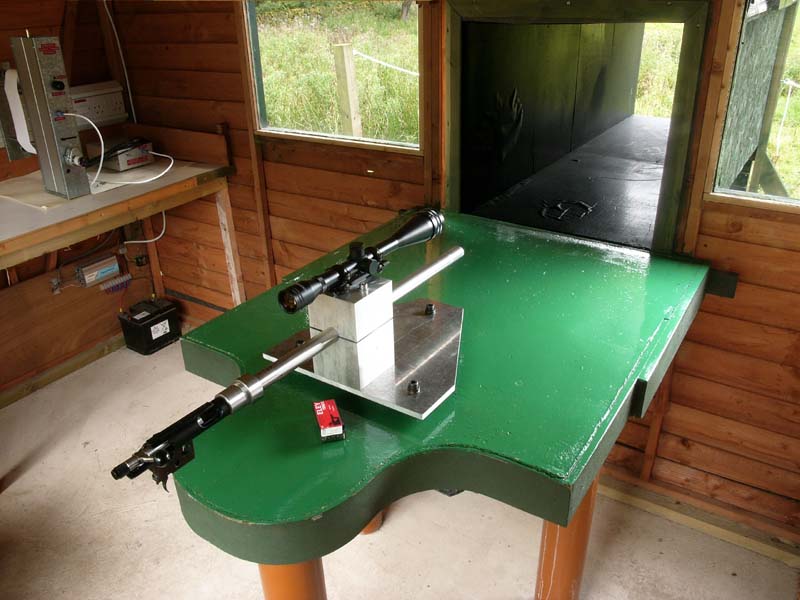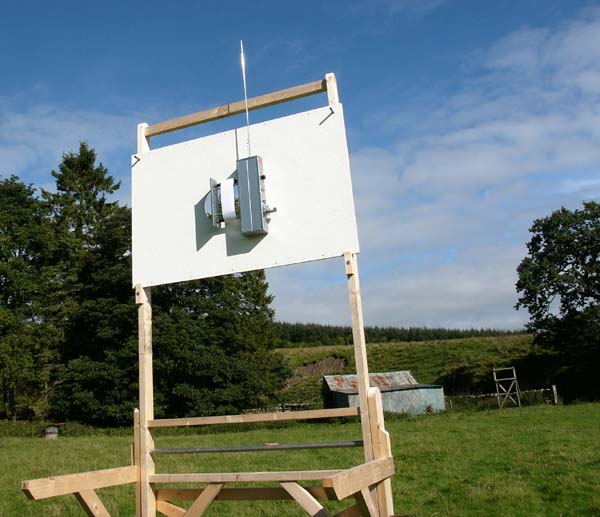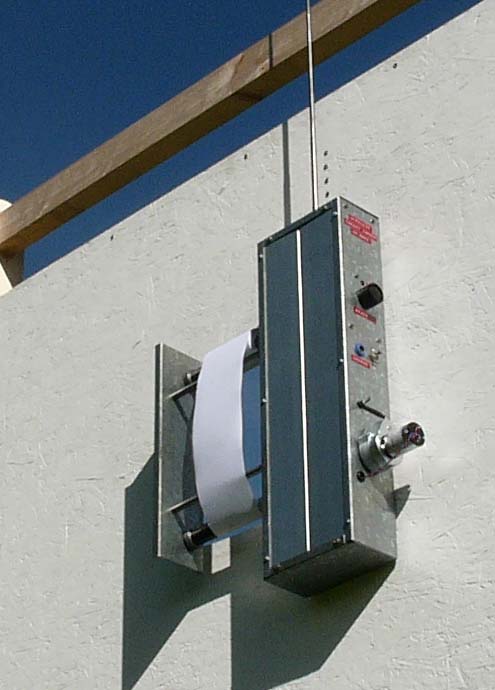
The test action chosen for use in these tests was the action from an old Baikal rifle which had been sitting on the shelf for some years. The action had always struck me as being well made and this seemed an excellent use for it. But getting the old barrel out of the action was painful! It was pinned with a series of glass hard pins which would not drive out and had to be drilled out with a handful of small carbide slot drills. (The drills kept breaking!) Once the pins were removed, the barrel was found to be glued in and even after heating to denature the epoxy, it could not be driven out with a mandrel down the action. Finally, the barrel was cut off in front of the action face and laboriously bored out. The lesson here is never to try and rebarrel a Baikal.
Once the barrel was removed, the action was turned down and an adapter was glued on. The adapter was threaded for a lock ring which would hold the barrel in place. This would allow barrels to be easily changed and indexed. The front of the action was reamed out to 25mm diameter to accept the test barrels. The test barrels are made with a conical back end rather than extractor slots. This means all machining operations on the barrel can be done on a lathe. As there is no thread either, the barrel can be easily indexed in the action. The barrels are turned down to 27mm ahead of the flange to fit into the barrel clamp on the test rig. The barrels are around 27 inches long, depending on how much needs cutting off the front to get rid of 'end effects'. All the barrels have 11 degree crowns.
|

The test rig is very simple. There is a 10mm thick aluminium plate attached to the concrete bench with three 10mm bolts. Self-aligning washers are used so that the plate is not bent as the bolts are tightened up. A 100mm (4") square barrel clamp is bolted to the rear of the plate.
This was meant to be a rigid test rig, but when looking through the scope mounted on the top of the clamp, it was surprising how easily the rig could be flexed so that the point of aim moved by 10mm or up or down at the 50 metre target. The flexible base plate is actually a bonus as it turns out that this rig can be "tuned" for some positive compensation at 50 metres. In the photo, the barrel is shown clamped in the middle, but the groups were strung vertically with the barrel in this position. With the barrel clamped just ahead of the lock ring, the groups were much rounder and smaller. The picture also shows a general view of the inside of the shooting shed, which is in a field just next to the workshops. The shed has a concrete bench and a tunnel with sound proofing material to deaden the noise of the muzzle blast. (This is actually quite effective, reducing the noise of the muzzle blast by 10 db, or a factor of ten.) The wireless target turner and transmitter can be seen on a shelf in the background, hooked up to the 12 volt system in the shooting shed having their batteries charged. The car battery on the floor provides the 12 volt power and this in turn is charged from a PV panel mounted next to the shed.
|

The test gun needed to be mounted so that it was parallel and the shots were clearing the stone wall seen just behind the 100 yard target frame in the bottom right of this picture, to hit the bank behind which acts as the stop butt. The bullet trajectory at 50 metres down the range is about 12 feet up in the air as the shooting shed is on a slight rise, so a swinging target frame was constructed to allow the wireless target turner to be mounted at ground level, then swung up into the air to be shot at.
|

With the barrel and action clamped (almost) rigidly in the test rig, it would not be possible to alter the aim when shooting a series of groups. The best solution seemed to be a remotely controlled 'target turner' which would wind on a roll of paper a small distance for each new group fired. To save laying out 50 metres of cable either permanently or for each testing session, it was decided to build in a radio receiver and so make it a wireless target turner.
This picture shows the wireless target turner mounted on the removable board of the 50 metre target frame. A hole is cut out of the board behind the paper target roll.
|

The operating radio frequency for the wireless target turner is 49.900 MHz. This picture shows the quarter wave vertical antenna for the transmitter. The two horizontal poles form the ground plane for the antenna. The antenna is mounted on top of the tunnel of the shooting shed. Behind the tunnel can be seen the PV panel to charge the car battery which supplies the 12 volt power for the shooting shed.
|

For any radio buffs reading this, this is a picture of the transmitter. It was designed to deliver 1 watt of power at 49.900 MHz into 50 ohms, and that is exactly what it does when the button on the front is pushed. It is powered by a small 12 volt jelly battery.
One watt is actually about a hundred times more power than is required to activate the wireless target turner. But this level of power ensures reliability, and also means that the wireless target turner can be used at longer ranges (out to 500 metres) if required. |